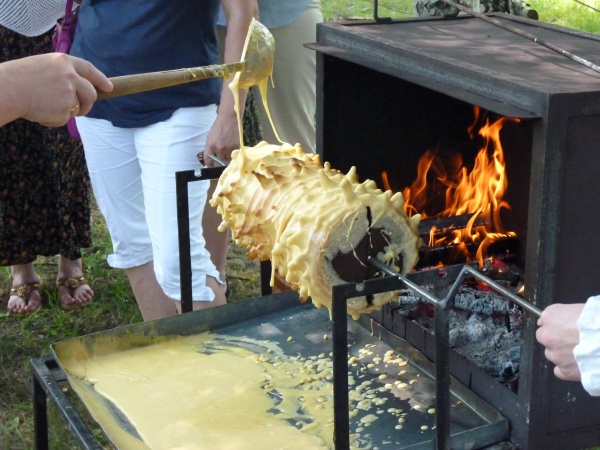Facts About Šakotis
Lithuanian šakotis, Polish sękacz, and Belarusian bankukha are names for a delightful traditional spit cake that has won hearts across these regions. Made from simple ingredients like butter, egg whites and yolks, flour, sugar, and cream, this cake is baked on a rotating spit, either in an oven or over an open flame. The cake's origins trace back to the days of the Polish-Lithuanian Commonwealth, with some saying it was introduced by Queen Bona Sforza of Poland, while others believe it was the creation of the Yotvingian tribe. Its name derives from its unique shape, reminiscent of a branched tree.
In Lithuania, šakotis holds a special place in celebrations, particularly at weddings and during Christmas. It's so cherished that it has even been featured at cultural events and has set records, including the largest šakotis ever made in Lithuania. Poland and Belarus also celebrate this cake as a beloved traditional treat, each with its own regional variations and names.
This style of spit cake isn't unique to these countries. Austria has its Prügelkrapfen, the Czech Republic enjoys Trdelník, France offers Gâteau à la broche, Luxembourg has Baamkuch, Sweden savors Spettekaka, Hungary loves Kürtőskalács, Slovakia delights in Skalický trdelník, and Turkey has its own Makara tatlısı. Even Indonesia has a version called Spekkoek, which originated during the Dutch colonial era in the East Indies.
No matter where you find it, this cake's rich history and delicious taste make it a favorite for many.

 Lithuania
Lithuania